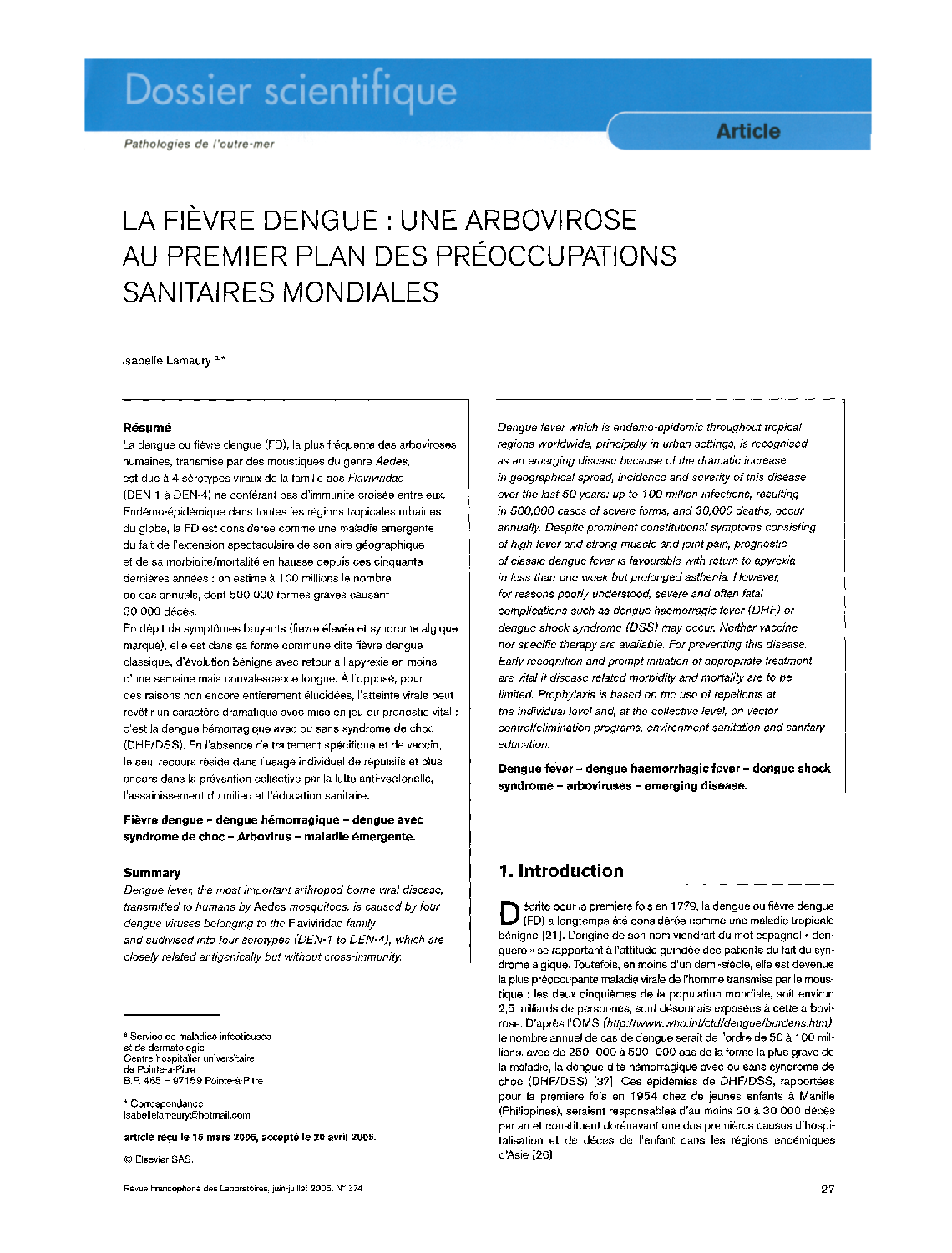| Article ID | Journal | Published Year | Pages | File Type |
|---|---|---|---|---|
| 9756860 | Revue Francophone des Laboratoires | 2005 | 7 Pages |
Abstract
Dengue fever, the most important arthropod-borne viral disease, transmitted to humans by Aedes mosquitoes, is caused by four dengue viruses belonging to the Flaviviridae family and sudivised into four serotypes (DEN-1 to DEN-4), which are closely related antigenically but without cross-immunity. Dengue fever which is endemo-epidemic throughout tropical regions worldwide, principally in urban settings, is recognised as an emerging disease because of the dramatic increase in geographical spread, incidence and severity of this disease over the last 50 years: up to 100 million infections, resulting in 500,000 cases of severe forms, and 30,000 deaths, occur annually. Despite prominent constitutional symptoms consisting of high fever and strong muscle and joint pain, prognostic of classic dengue fever is favourable with return to apyrexia in less than one week but prolonged asthenia. However, for reasons poorly understood, severe and often fatal complications such as dengue haemorragic fever (DHF) or dengue shock syndrome (DSS) may occur. Neither vaccine nor specific therapy are available. For preventing this disease. Early recognition and prompt initiation of appropriate treatment are vital if disease related morbidity and mortality are to be limited. Prophylaxis is based on the use of repellents at the individual level and, at the collective level, on vector control/elimination programs, environment sanitation and sanitary education.
Keywords
Related Topics
Physical Sciences and Engineering
Chemistry
Analytical Chemistry
Authors
Isabelle Lamaury,
